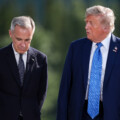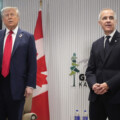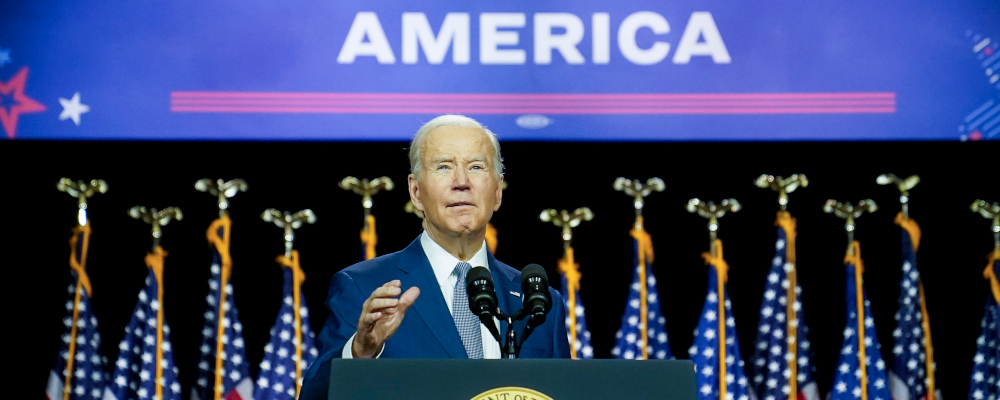Canada’s economic productivity has trailed the U.S. for decades. This isn’t news and has numerous possible causes. What is particularly troubling for all Canadians, though, is that the gap is getting wider.
According to the latest data from Statistics Canada, which was released last week, Canada’s labour productivity—that is, how much stuff each hour of work produces on average—fell for the fourth consecutive quarter. As a result, Canadian productivity is now about 2 percent lower at the beginning of 2023 than it was one year earlier. Worse, this has reversed several years of gains. We’re now back to mid-2017 levels.
This matters. Had productivity growth in Canada kept pace with the United States over the past five years, I estimate we’d be producing over 8 percent more per hour worked than we do now. That’s enormous. Roughly speaking, it’s equivalent to $5,500 per person in lost economic output. Given how closely wages are tied to productivity, this directly affects our living standards and, in my view, poses a bigger affordability challenge than recent high inflation.Since 2000, for example, inflation-adjusted average hourly labour compensation has increased by 20 percent. Labour productivity over this same period has increased by 18.5 percent. Over time, the purchasing power of our incomes is tied directly to productivity growth.
Although recognized nationally as a pervasive issue (perhaps exacerbated by COVID), these figures mask significant differences across Canadian provinces and U.S. states. Some provincial economies outperform many U.S. states, yet most lag far behind.
To show this, I use the latest data from several sources to estimate the total GDP per person in 2022 for each of the 60 provinces and states.Canada’s GDP data for provinces comes out with a long lag; I estimate 2022 by using the 2021 official statistics and RBC Economics’ latest forecast for 2022 growth. Importantly, since price levels differ considerably across countries, I use a common approach to compare the quantity of final goods and services each economy produces. According to the most recent OECD figures, one dollar in Canada can buy the same amount of goods as 80 cents can in the United States. I use this to adjust the Canadian data into something comparable to the U.S., which I display below.
The disparities across regions are significant, and most Canadian provinces lag far behind almost all U.S. states. Ontario, for example, has a per-person level of economic output that is similar to Alabama (both equivalent to $55,000 USD worth of final goods and services produced annually per person). The Maritimes are below Mississippi, and Quebec and Manitoba lag behind West Virginia. Only Alberta exceeds the U.S. average of $76,000, but even Canada’s strongest economy ranks 14th overall. It’s roughly comparable to New Jersey and Texas, but 13 percent below California and nearly one-quarter below New York.
Productivity is not merely some abstract economic concept. It’s at the heart of any robust economy, and central to the living standards of each of us. GDP per capita roughly captures the total amount of income generated each year within an economy. For capital-intensive economies like Alberta, an above-average share of that income is captured by capital investors and a below-average share by labour. But even using measures of average household income reveals a large gap between most Canadian provinces and U.S. states.
Overall, the median household income in the U.S. is just under $71,000 per year. For Canada, it’s just over $78,000 Canadian dollars, which is equivalent to roughly $62,000 in equivalent purchasing power in the U.S. While this data is not entirely comparable, GDP per capita is strongly related to average incomes, even within Canada.
Simply put: lower productivity almost always means lower living standards.
There’s no silver bullet to increase productivity growth in Canada. This could include investing more in skills training, increasing infrastructure development, streamlining taxes and regulations, and so on. But the first step is to prioritize it more than most governments tend to do. All policies should be evaluated with productivity in mind.

This doesn’t mean no other consideration can win the day. Most of us are often willing to trade off economic gains to achieve non-economic outcomes. Even so, we should strive to limit the adverse impacts. Take climate policy. We should never opt for a high-cost policy when a low-cost alternative exists, as Sean Speer recently wrote for The Hub, as have Christopher Ragan, Paul Rochon, and Mark Jaccard more recently in the context of phasing out oil and gas. Unfortunately, most federal climate policy is unnecessarily costly and is set to become even more so.
Prioritizing productivity is something that should span political boundaries. A productivity agenda is not exclusively about improving regulations or lowering taxes, which some parties oppose. Childcare is a great example. Evidence is beginning to mount that the increased accessibility and affordability of childcare this year is increasing employment rates and labour force participation rates among mothers with young children, as Wilfrid Laurier University professor Tammy Schirle and Business Council of Alberta economist Alicia Planincic have recently pointed out. This boosts productivity.
This is not merely a federal policy concern, given the wide diversity between the provinces. All Canadian governments should prioritize it, and we should learn lessons from each other. By embedding productivity concerns at the core of policymaking in Canada, we wouldn’t just be building a more competitive economy. We’d be enabling a more prosperous future for all of us.
Recommended for You

The state of Canada’s economy halfway through 2025

‘It’s really important that we make mining fashionable again’: Ken Ash on why mining is essential to creating a happy and secure Canada

The Notebook by Theo Argitis: Trump halts trade talks, Carney’s trade-offs and John McCallum’s legacy

‘A direct attack’: The Roundtable on Trump’s surprise trade announcement and Canada’s immigration debacle




